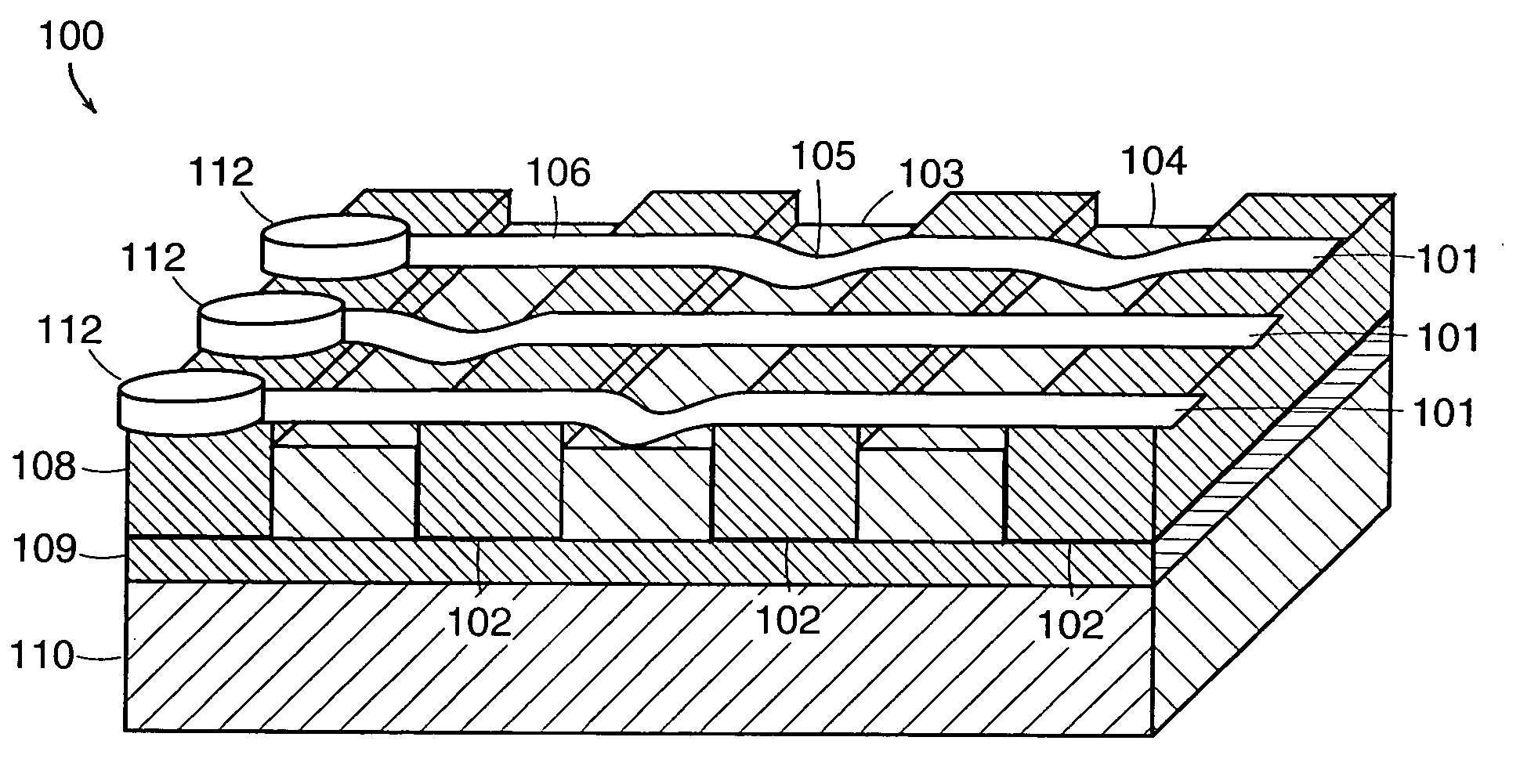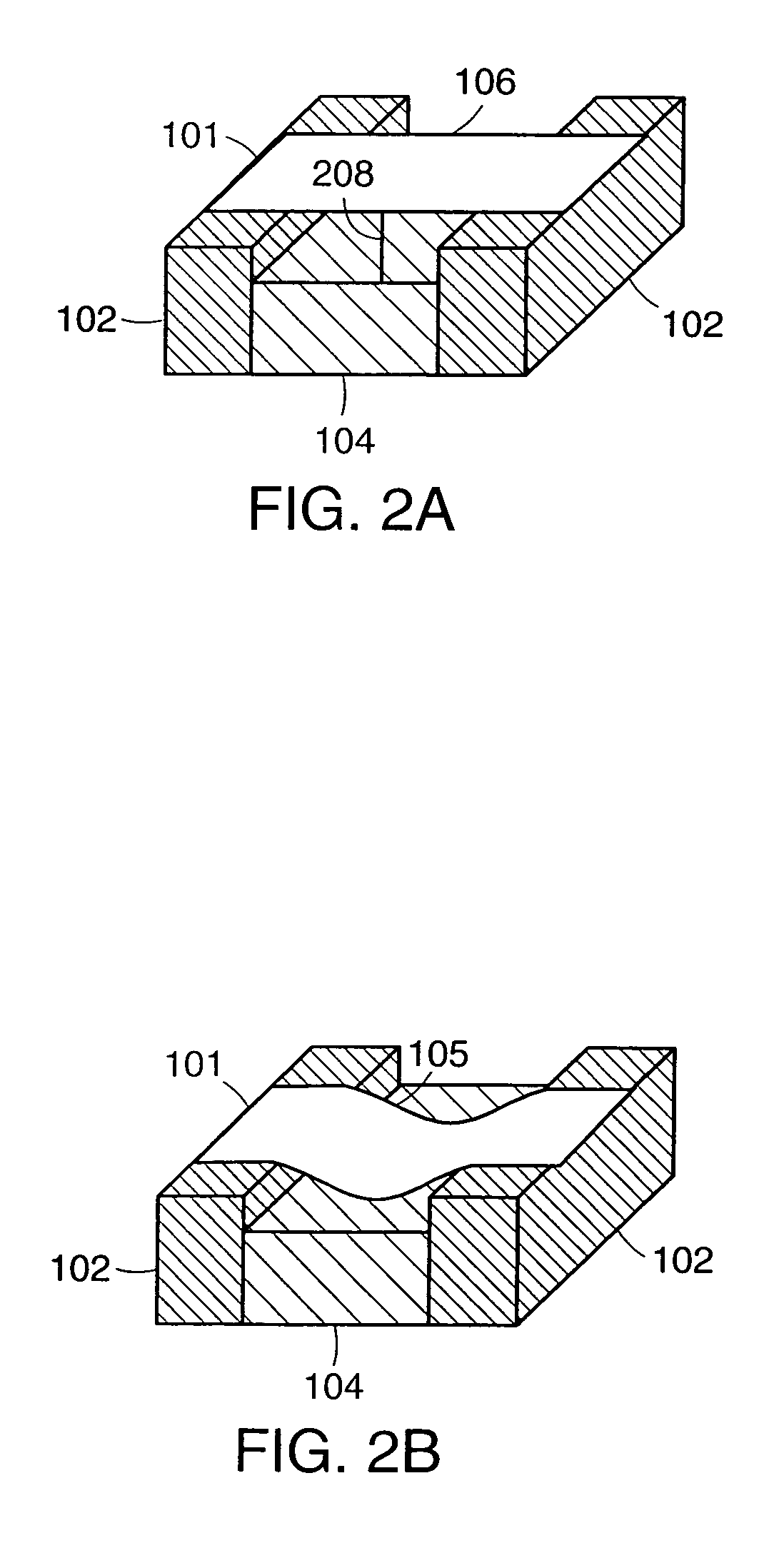Electromechanical memory array using nanotube ribbons and method for making same
a technology of nanotube ribbons and memory arrays, applied in nanoelectromechanical switches, relays, instruments, etc., can solve the problems of long write cycles (ms), low relative speed in comparison to dram or sram, and relatively low cost of roms,
- Summary
- Abstract
- Description
- Claims
- Application Information
AI Technical Summary
Problems solved by technology
Method used
Image
Examples
Embodiment Construction
[0097] Besides carbon nanotubes other materials with electronic and mechanical properties suitable for electromechanical switching could be envisioned. These materials would have properties similar to carbon nanotubes but with different and likely reduced tensile strength. The tensile strain and adhesion energies of the material must fall within a range to allow bistability of the junction and electromechanical switching properties to exist within acceptable tolerances.
[0098] For the purpose of integrating CMOS logic for addressing two approaches can be envisioned. In the first embodiment the nanotube array will be integrated before metallization but after ion implantation and planarization of the CMOS logic devices. A second method involves growth of the nanotube arrays before fabrication of the CMOS devices involving ion implementation and high temperature annealing steps. Upon completion of these steps the final metallization of both the nanotube ribbons and the CMOS devices will...
PUM
 Login to View More
Login to View More Abstract
Description
Claims
Application Information
 Login to View More
Login to View More - R&D
- Intellectual Property
- Life Sciences
- Materials
- Tech Scout
- Unparalleled Data Quality
- Higher Quality Content
- 60% Fewer Hallucinations
Browse by: Latest US Patents, China's latest patents, Technical Efficacy Thesaurus, Application Domain, Technology Topic, Popular Technical Reports.
© 2025 PatSnap. All rights reserved.Legal|Privacy policy|Modern Slavery Act Transparency Statement|Sitemap|About US| Contact US: help@patsnap.com



